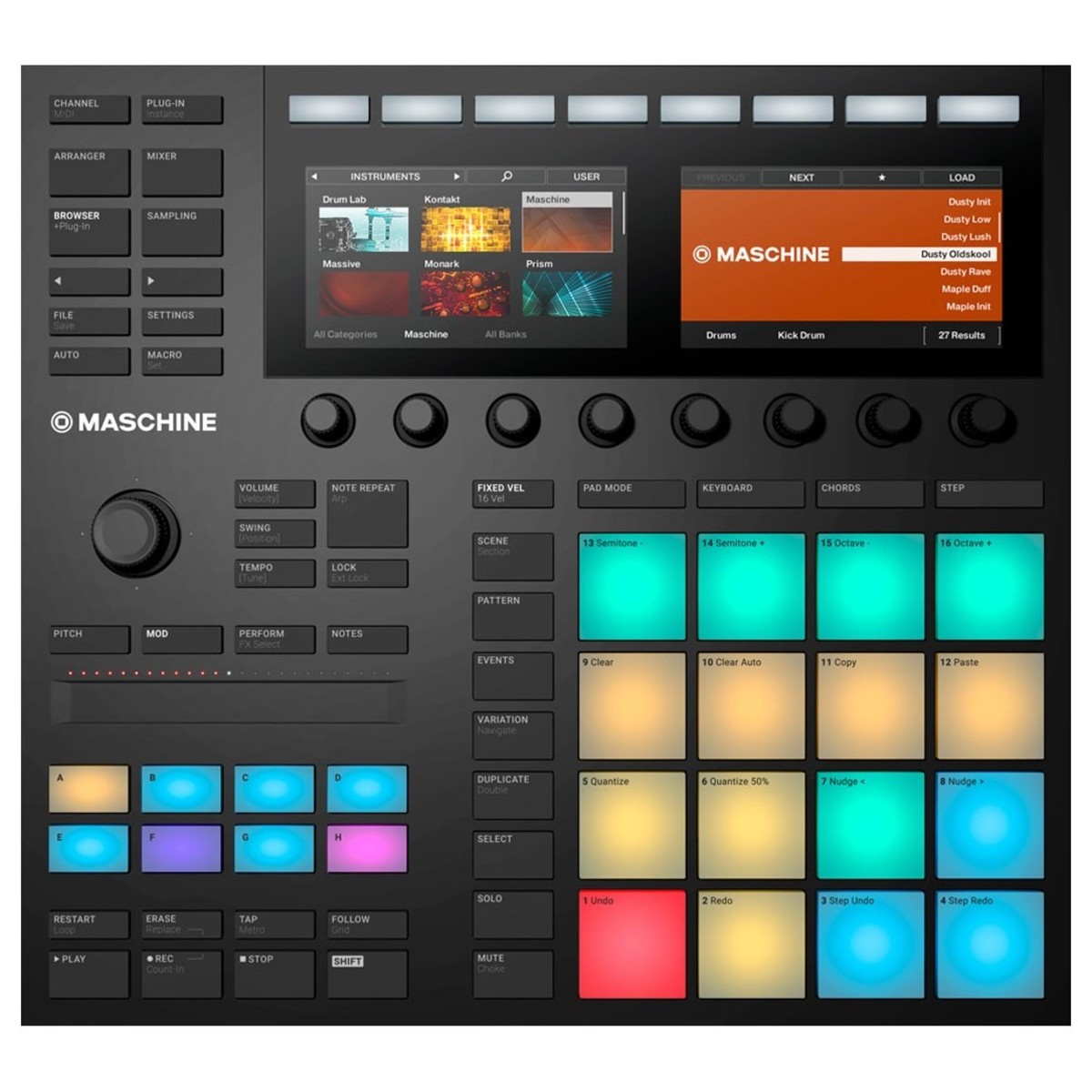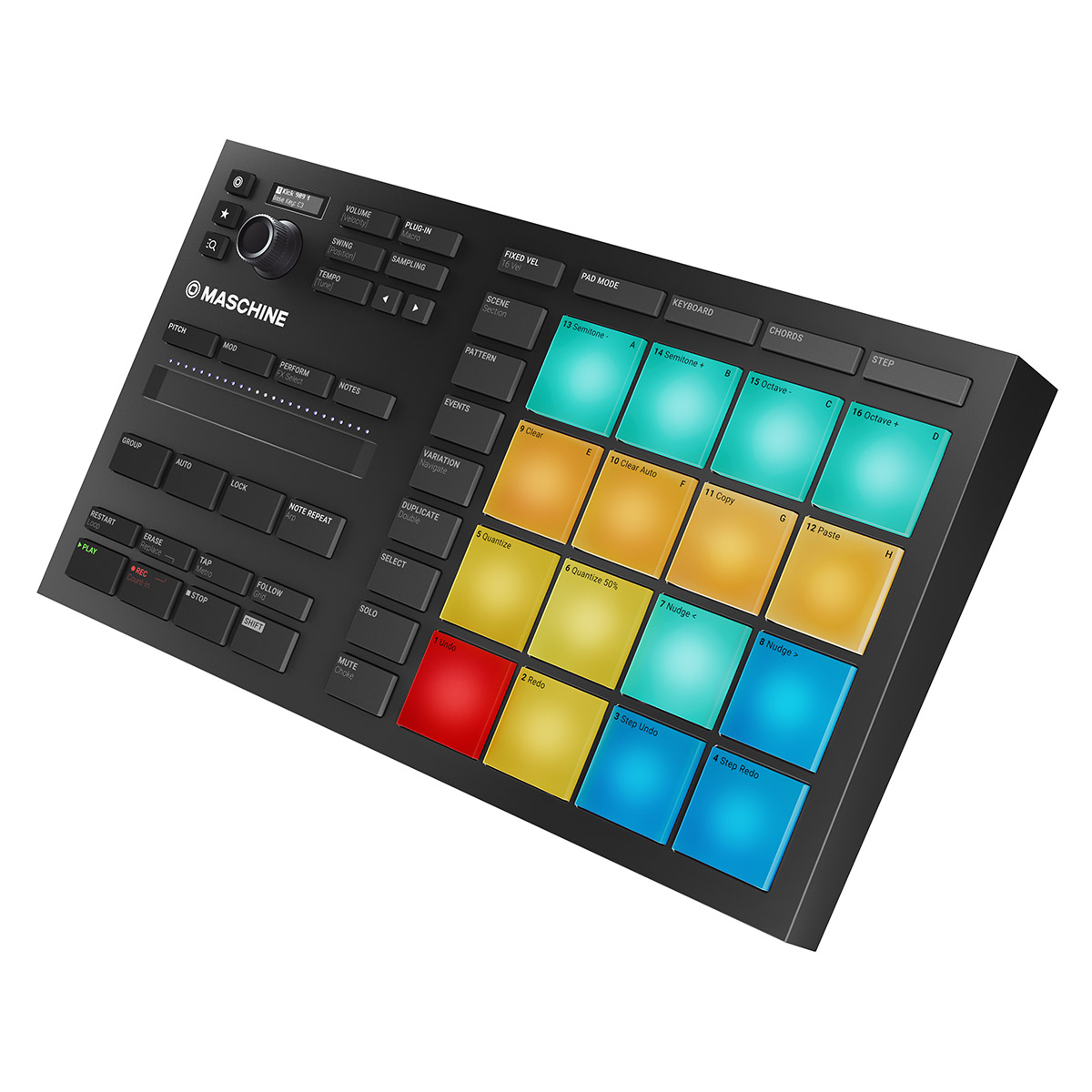

And speaking of Macros, they can now be assigned targets from the Master, Group and Sound levels, and you can have as many as you like. The same controls can also be enabled for host automation - yes, at last you can freely send automation data from your DAW to limitless parameters within Maschine without the need for Macros. The biggest MIDI-related change, though, is that you can now assign external MIDI controllers directly to all rotaries and buttons - not just Macros - via the new Assignment area, which puts a MIDI Learn button underneath every viable target in the Control area, including level and pan controls in the mixer.
NATIVE INSTRUMENTS MASCHINE MK3 GROOVE PRODUCTION STUDIO FULL
Maschine 2.0 adds quite a bit of extra MIDI functionality, including access to the full list of MIDI CCs for automation envelopes, sending of Program Change messages to plugins, and MIDI file import via the browser/Finder/Explorer.

Appearing in the Control area, the Side-Chain Input page lets you choose any Group or Sound as your key input, then adjust the input level and filter frequency. Related to the Mixer (although, oddly, not accessible within it or the Plug-in Strip), sidechaining is fully supported in Maschine 2 for VST/AU plugins and its own Compressor, Limiter, Gate, Filter and Maximizer effects. Combine this with the ability to send each output of a multi- output instrument to any Sound (mixer channel) and Maschine's virtual instrument support feels truly complete at last. Other sources the Cue bus can receive are the metronome and sample pre- listening in the Browser/Sample Editor.Īlso worth mentioning is the newly added multitimbral plugin support, whereby suitably equipped virtual instruments can receive input from multiple Sounds (tracks) on specified MIDI channels. Not quite the DJ-style push-button setup we hoped for, and perhaps it can be moved to a Shift-button operation at some point. It works exactly as advertised, although to get to the Cue On/Off function on your Maschine controller, you have to navigate to the Sound or Group's Output properties page and turn a knob. The full range of Sound and Group setup functions are accessible in the Mixer, including colouring, renaming and plugin loading, and with the Plug-in Strip below it, it has all mix- related bases covered, despite the vast empty space that could drown those who invested in large monitors.Īn interesting Mixer feature for live performers is the new Cue bus, which enables any Sound or Group to be taken out of the mix and routed to the dedicated output of your choice - ie, your headphones - by clicking a button on its channel strip. Maschine 2.0's Mixer (and, indeed, Maschine Studio's Mix mode) gives a traditional mixer-style overview and control of your Group, Sound and Master levels and panning, as well as routing of MIDI and audio within Maschine and to/from the outside world. "Maschine 2.0's Mixer gives a traditional mixer-style overview of your Group, Sound and Master levels and panning" While we're on the subject of visibility, the total separation of Arrange and Mix views is a bit awkward - we'd like to able to view any given combination of Editors and areas at the same time. While the aforementioned Additional view does fill a lot of that space when used, it all feels very empty the rest of the time. The Plug-in Strip does a great job of presenting internal/NI plugin parameters in the one window, although some alternative view options are needed, since on a big monitor, an awful lot of screen space can end up wasted below that resolutely horizontal parade of effects. Third-party plugins just get a standard graphic and preset selector. For example, Massive reveals its Macros, LFOs and envelopes, while Reaktor Prism shows its full Ensemble. There's more on the mixer section below, but the Plug-in Strip simply shows all of the plugins loaded onto the currently selected mixer layer (Master, Group or Sound) as a horizontal list, with interactive "custom panels" for Maschine's internal effects, Sampler and Drumsynths (we'll get onto the latter in due course) and all NI plugins.Ĭertain NI plugins also get an expanded panel in the Strip, called Additional view - some the full GUIs, others reduced versions of them.


 0 kommentar(er)
0 kommentar(er)
